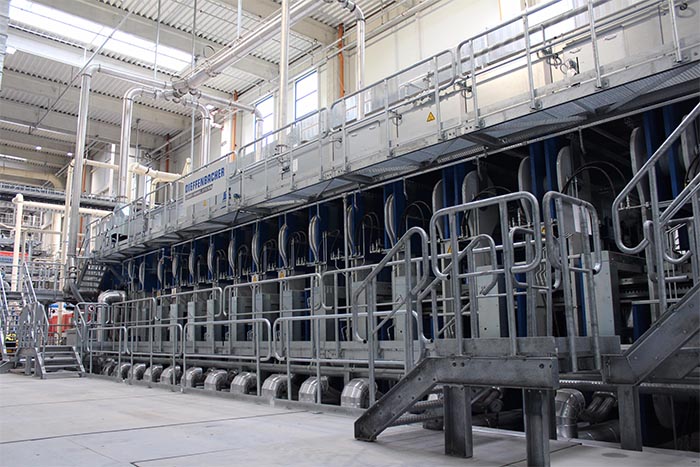CROATIA – After a seven-month assembly period, the first plant with the new Dieffenbacher CPS+ press has been successfully put into operation.

The first board was produced according to plan on October 1, 2016 at Kronospan’s new particleboard plant in Bjelovar, Croatia. This is the first Dieffenbacher continuous CPS+ press that enters into operation after its introduction to the market during Ligna 2015. Two other CPS+ project commissions in Thailand will take place in the first half of 2017. To date Dieffenbacher has sold eleven plants featuring the new CPS+ press.
“The process of commissioning the first CPS+ was absolutely seamless,” said Bernd Bielfeldt, Dieffenbacher Head of the Wood Business Unit. Only two weeks after first board production, Koronospan increased production to three shifts, citing the reliability of its CPS+ press. Kronospan has also said it is extremely satisfied with the project, adding that the joint approach to project processing has proven to be reliable. It was not apparent either in the planning phase or installation phase that this was the first project involving a CPS+.
Dieffenbacher began development of the new generation of presses in 2014. One ambitious goal was to improve the thickness tolerances of manufactured boards. Due to the modular frame with its new arrangement of press cylinders, the CPS+ ensures perfectly even distribution of pressure when pressing the board. For Dieffenbacher customers, this provides consistently high product quality and low raw material consumption.
“We are confident that Kronospan and other customers will benefit from the advanced CPS+ technology,” explained Bielfeldt. Dieffenbacher highlighted how the new thermo-active roll plates ensure that the mats can be heated at an earlier stage. The CPS+ Press also offers improved accessibility for servicing.
The CPS+ has all the advantages of the original CPS model, proven over decades of service. These advantages include the variable double joint press infeed, thermal expansion of the frames—which allow product changeover on the fly without interruptions—and the Parallel Press Gap System (PPS), which stops the mat “breathing out” between the cylinder banks.



0 Comments